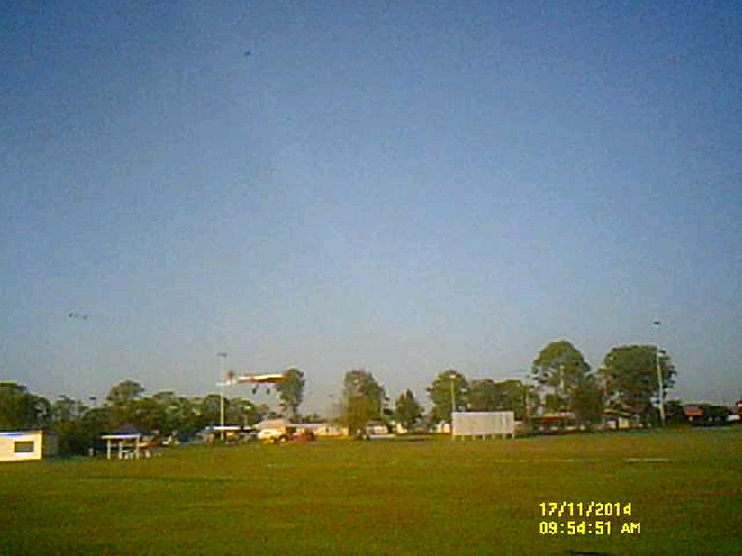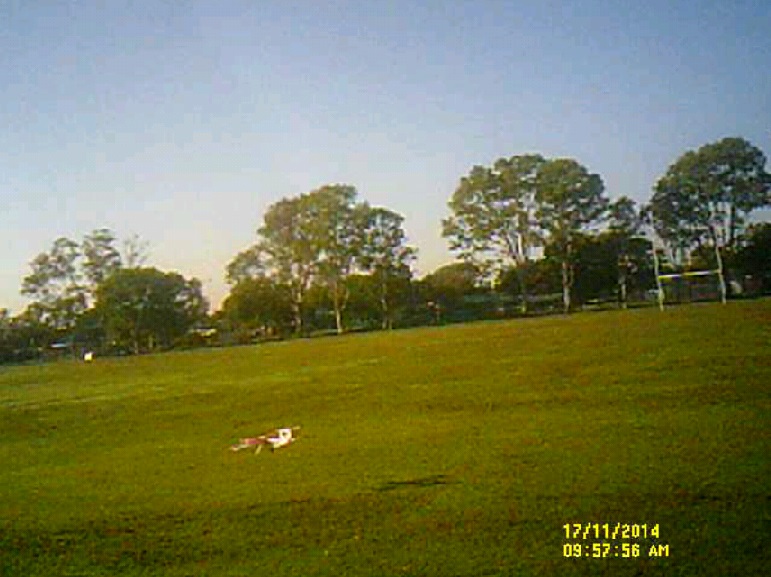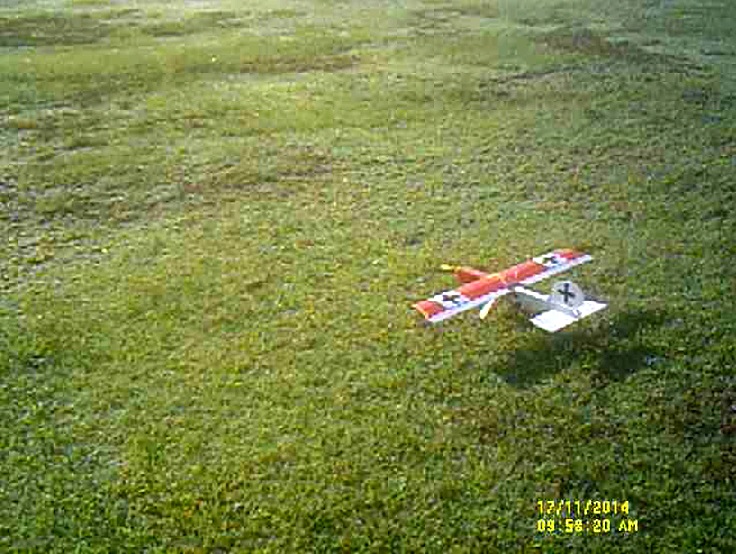Hai-Lee
Old and Bold RC PILOT
We should all have by now heard of the Mini Tiny Trainer and I have built a few, (too many to remember). There is/was a challenge thread on the forum titled "getting-stupid-with-the-tiny-trainer-the-challenge". After a bit of deliberation I decided to join the challenge just to add a few crazy mods to the tiny trainer and to produce a far more serious beast to throw around the skies.
Enter the "MUTTS". The MUTTS are just Mini Ugly Tiny Trainer Stick/s.
Sure I could have just printed out the plans at an enlarged scale and used that but it lacks a real challenge. In addition the standard mini powerpod is too small to accommodate a much larger motors and the standard powerpod would not fit in the Tiny Trainer. What I needed was a MIDI powerpod. One that could take a larger motor and yet still fit into a Tiny Trainer nose, (with a few mods to the nose that is).
Additionally I needed a different wing for more lift and the provision of functional flaps. The wing should have no shortage of lift so that sustained low speed flight should be easy as will be hovering in a breeze and even short field landings EVERY time! A different and somewhat matching tail was also desirable. So that build commenced!
Teaser Photo, (currently ready for maiden- Photo of flaps deployed)

Photo taken after maiden goes here
Specifications:
Wing Span: 1000mm nominal (990mm)
Wing Incidence: 0 to 3 degrees - Initial setup 3 degrees approximately!
Length: 680mm nominal
Wing cord: 180mm
Weight: 695 grams with a 1300 3S battery
RC Control functions: Aileron, Elevator, Throttle, Rudder, Flaps.
Landing Gear: Tricycle fixed. - Taildragger and steerable nose wheel optional.
Motor Recommended: OPEN! (Subject to ability to achieve proper balance),(Cf 2812 1534kV with a 7x6 prop - test flown).
Servos: 9 gram - 6 required!
CG/Balance point: 40 to 50mm from wing LE. (Tested - test flown)
Plans:
Updated first edition MUTTS pieces plans attached!
Used in conjunction with Mini Tiny Trainer Plans - https://www.flitetest.com/articles/flite-test-tiny-trainer
Modifying the nose and power pod: https://forum.flitetest.com/index.php?threads/larger-power-pod-for-tiny-trainer.57826/
Tips or Recommendations:
Start with the CG at the forward point recommended. (better slightly nose heavy).
Use coarse rudder for direction control on take off run, decreasing the rudder deflection as the speed increases. (Helps keep it straight or steer as required).
Maximum recommended flap deflection should be around 45 degrees. (Only tested to around 20 degrees due to control horn selection).
If possible have the flaps operated by a 3 channel switch as the 20 degree setting is good for short field takeoffs.
The nose wheel is lightly loaded and coarse use of elevator and throttle can see the nose wheel rise up off of the ground during the take off run. Not a serious problem but something to be aware of!
The wing by itself can be retrofitted to a standard TT though it will fly somewhat slower and land slower. Ensure that the Wing CG point is used if the wing is used on an older standard TT fuselage!
Ensure that the ESC you use has a 3A BEC minimum!
On final approach keep the plane level, (slightly nose down with flaps extended), and GENTLY start the flair as the plane gets close to the ground, (around 12 inches/30cm above the ground) Done properly it will settle on the main wheels and then the nose wheel will settle as the speed drops. DO NOT INCREASE ELEVATOR when the main wheels touch the ground UNLESS you apply the throttle and take off again! Too much elevator can cause the plane to suddenly rise up and stall with the resultant damage from a crash!
Enter the "MUTTS". The MUTTS are just Mini Ugly Tiny Trainer Stick/s.
Sure I could have just printed out the plans at an enlarged scale and used that but it lacks a real challenge. In addition the standard mini powerpod is too small to accommodate a much larger motors and the standard powerpod would not fit in the Tiny Trainer. What I needed was a MIDI powerpod. One that could take a larger motor and yet still fit into a Tiny Trainer nose, (with a few mods to the nose that is).
Additionally I needed a different wing for more lift and the provision of functional flaps. The wing should have no shortage of lift so that sustained low speed flight should be easy as will be hovering in a breeze and even short field landings EVERY time! A different and somewhat matching tail was also desirable. So that build commenced!
Teaser Photo, (currently ready for maiden- Photo of flaps deployed)

Photo taken after maiden goes here
Specifications:
Wing Span: 1000mm nominal (990mm)
Wing Incidence: 0 to 3 degrees - Initial setup 3 degrees approximately!
Length: 680mm nominal
Wing cord: 180mm
Weight: 695 grams with a 1300 3S battery
RC Control functions: Aileron, Elevator, Throttle, Rudder, Flaps.
Landing Gear: Tricycle fixed. - Taildragger and steerable nose wheel optional.
Motor Recommended: OPEN! (Subject to ability to achieve proper balance),(Cf 2812 1534kV with a 7x6 prop - test flown).
Servos: 9 gram - 6 required!
CG/Balance point: 40 to 50mm from wing LE. (Tested - test flown)
Plans:
Updated first edition MUTTS pieces plans attached!
Used in conjunction with Mini Tiny Trainer Plans - https://www.flitetest.com/articles/flite-test-tiny-trainer
Modifying the nose and power pod: https://forum.flitetest.com/index.php?threads/larger-power-pod-for-tiny-trainer.57826/
Tips or Recommendations:
Start with the CG at the forward point recommended. (better slightly nose heavy).
Use coarse rudder for direction control on take off run, decreasing the rudder deflection as the speed increases. (Helps keep it straight or steer as required).
Maximum recommended flap deflection should be around 45 degrees. (Only tested to around 20 degrees due to control horn selection).
If possible have the flaps operated by a 3 channel switch as the 20 degree setting is good for short field takeoffs.
The nose wheel is lightly loaded and coarse use of elevator and throttle can see the nose wheel rise up off of the ground during the take off run. Not a serious problem but something to be aware of!
The wing by itself can be retrofitted to a standard TT though it will fly somewhat slower and land slower. Ensure that the Wing CG point is used if the wing is used on an older standard TT fuselage!
Ensure that the ESC you use has a 3A BEC minimum!
On final approach keep the plane level, (slightly nose down with flaps extended), and GENTLY start the flair as the plane gets close to the ground, (around 12 inches/30cm above the ground) Done properly it will settle on the main wheels and then the nose wheel will settle as the speed drops. DO NOT INCREASE ELEVATOR when the main wheels touch the ground UNLESS you apply the throttle and take off again! Too much elevator can cause the plane to suddenly rise up and stall with the resultant damage from a crash!
Attachments
Last edited:




























